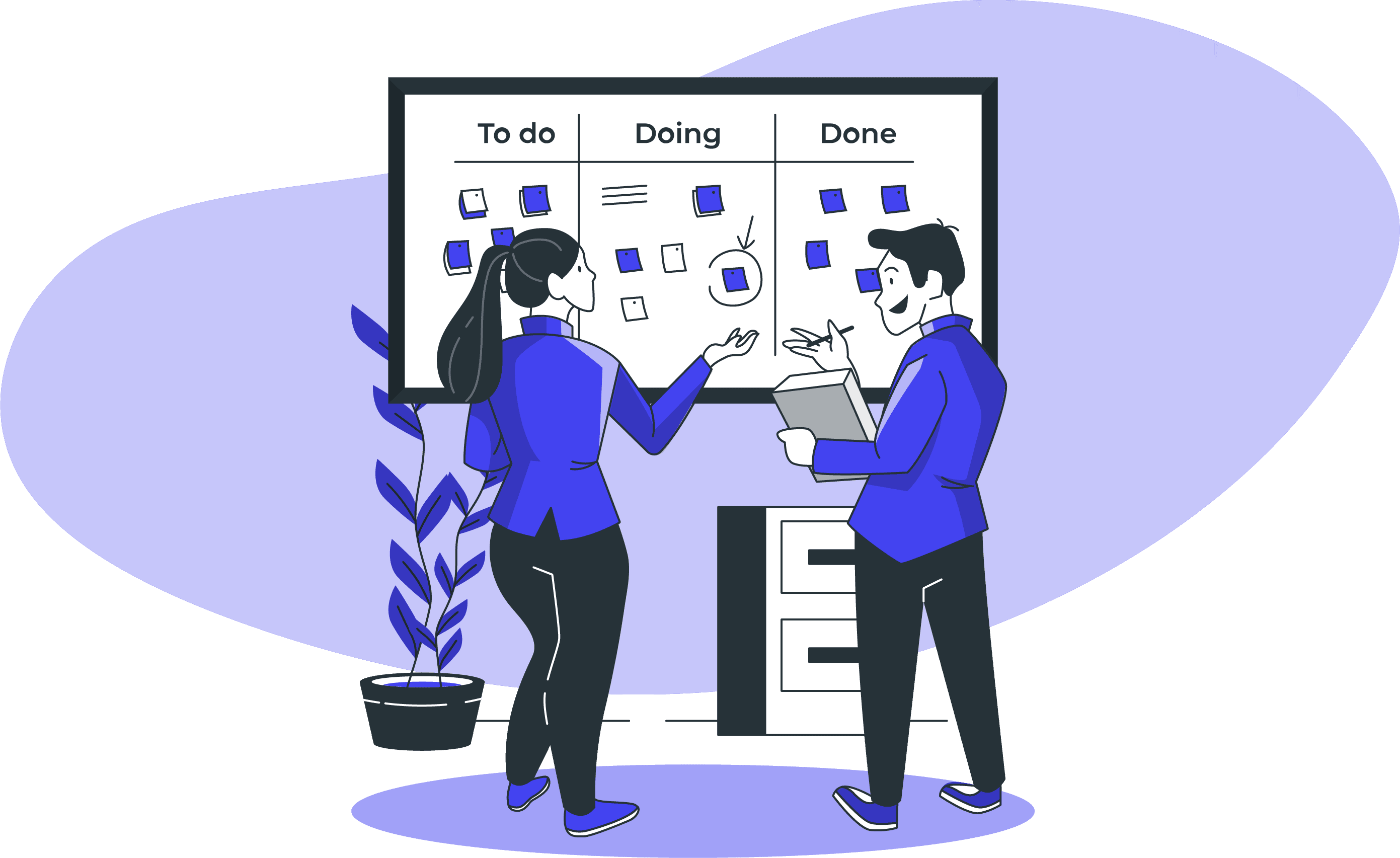Share this article:

What is Agile?

Agile is a project management approach that emphasizes small, iterative movements toward a goal. Short-term development cycles are used for the incremental stages of a project. Instead of top-down management and strict adherence to a predetermined plan, this strategy emphasizes rapid delivery, flexibility, and cooperation.
In agile, projects are broken down into little pieces of user functionality, prioritized, and delivered in 2-4 week iterations, or sprints.
In order to develop only what the customers desire, teams work in short cycles. Before each new cycle begins, the team sets its objectives. If a customer has a question about functioning, the team communicates directly with them. The product owner analyses the customer's priorities and feeds them to the team so that they may focus on the most important tasks. The team makes an estimate of how long each iteration of the job will take and how it will be accomplished.
Customers evaluate the product's performance at the end of each iteration. Each iteration's lessons are recorded in retrospectives and applied to the next. As a result, both the products themselves and the development process itself are continuously enhanced.
Team members and stakeholders can respond to difficulties as they arise in Agile processes since there is frequent feedback. The Agile method was originally designed for software development, but it has since been adopted by a wide range of industries and businesses.

Agile is not a methodology in and of itself; rather, it is a way of thinking about how projects are carried out. It's not considered a methodology because it doesn't specify which tools and processes should be employed in its implementation.
Agile, on the other hand, is a catch-all word for a wide range of management approaches. XP (Extreme Programming), Scrum (Scrum), and Kanban (Kanban) are all Agile methodologies.
Agile values and principles
Four core ideals and a set of guiding principles underpin Agile project management. The Agile Manifesto, drafted in 2001 by seventeen software development managers, is the foundation for these values and principles. The Agile Manifesto was largely created in response to concerns about software development procedures that were seen as bottlenecks at the time.
Agile values

Despite the importance of tools and processes, the Agile Manifesto emphasises the importance of the people behind them. Tools alone aren't enough to achieve success, but having the appropriate people in place and empowering them to work together smoothly can lead to success.
Agile's founders argued that getting work done was more important than spending too much time on planning and documenting the process.
Customer cooperation over contract negotiation: Agile attempts to retain touch with stakeholders throughout the creation process instead of isolating them.
If your strategy for dealing with change doesn't make sense any longer, you may be doing more harm than good by sticking to it. The Agile ideology emphasises the need for adaptability.
Agile project management is built on the ideas of early and frequent delivery, simplicity, continuous feedback, the participation of all interested parties, and individual support, are just a few of the core principles of Agile.
What are the benefits of adopting an Agile approach?
Involving the end-users in the project is recommended, allowing for transparency and visibility. Throughout the project, there is constant planning and input that delivers value to the business from the start.
Companies adopting an agile approach believe that generating business value early on in the development phase makes it easier to mitigate any risks that may arise. The following are some of the most significant advantages of using agile project management:
High levels of product excellence
- Testing the product on a regular basis to ensure it is working properly during the development process;
- Requirements definition and elaboration in real time;
- Making use of continuous integration and testing on a daily basis;
- Using sprint retrospectives as a way to constantly improve processes and work
- Developing software is done in small, quick steps.
Improved retention of clientele
- Demonstrating to clients how a product works;
- Bringing items to market faster and more frequently;
- Retaining and enthusing customers.
Improved management of the project
- Sprint meetings are held every day;
- Transparency via radiators of information.
Improved management of the project
- Sprint meetings are held every day;
- Transparency via radiators of information.
Reduced risks
- Feature development is carried out in short bursts called "sprints”;
- Agility allows for the rapid implementation of recent modifications;
- The process of creating a product while taking into consideration the wants and requirements of the customer.
Return on investment (ROI) can be achieved more quickly.
- Concentrating on the importance of the company's bottom line, making it possible for the customer to prioritise features;
- After a few iterations, a functional product is "ready to market.";
- Fast product releases and the opportunity to monitor client feedback are hallmarks of agile development.
Bulcode is a strong believer in the principles of Agile development, as expressed in the Agile Manifesto, because we have the experience to believe this is one of the most proper ways to deliver a project.
SUBSCRIBE TO OUR NEWSLETTER
Share this article:


.png&w=3840&q=75)








